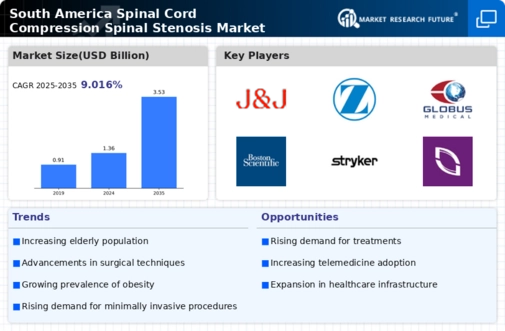The South America Spinal Cord Compression Spinal Stenosis Market presents a dynamic landscape characterized by a variety of competitors aiming to establish their foothold in this growing medical sector. The market, driven by an increase in spinal disorders due to aging populations, changing lifestyles, and rising awareness about treatment options, showcases the potential for significant advancements and innovations. The competitive insights reveal a trend toward collaboration, research investments, and an impressive pipeline of products aimed at addressing spinal stenosis effectively.
Companies in this region are not only competing on the technological front but also focusing on enhancing patient outcomes and establishing partnerships to leverage distribution networks, ensuring broader access to their therapies and systems.
DePuy Synthes has established a significant presence within the South America Spinal Cord Compression Spinal Stenosis Market, showcasing strengths in orthopedic and neuro products. With a profound reputation for quality and innovation, DePuy Synthes successfully caters to the needs of healthcare providers in the region, offering a range of products designed to treat spinal disorders. The company’s commitment to research and development enables it to maintain a competitive edge as it continuously introduces state-of-the-art solutions for spinal decompression and stabilization.
Their established infrastructure within South America facilitates efficient distribution and local expertise, allowing them to address market demands effectively and ensure that healthcare professionals have access to the latest technologies.
Medtronic also plays a vital role in the South America Spinal Cord Compression Spinal Stenosis Market, with a diverse portfolio of products and services focused on spinal health. The company's innovations include minimally invasive surgical tools and advanced implantable devices designed to alleviate spinal stenosis symptoms and improve patient outcomes. Medtronic's strong market presence is further reinforced by its strategic collaborations and acquisitions, which enhance its capabilities in delivering comprehensive treatment solutions. Their focus on educational programs and support services for healthcare providers contributes to a deeper understanding of spinal health issues in the region.
With a commitment to enhancing patient care, Medtronic continues to invest in research and local partnerships within South America, ensuring a competitive stance in an evolving healthcare market.


















Leave a Comment